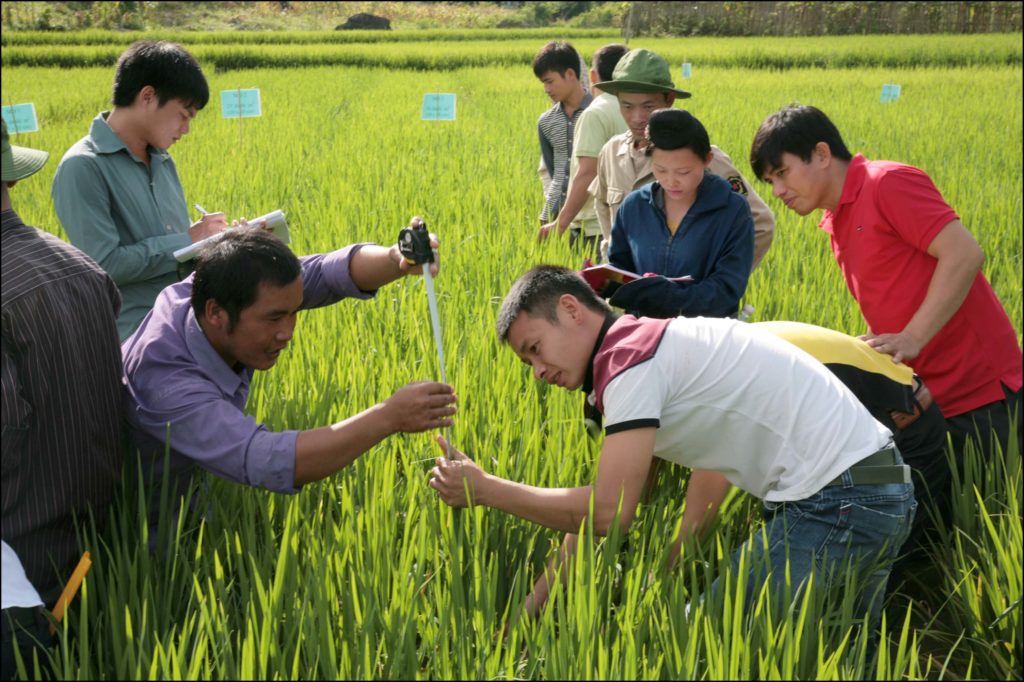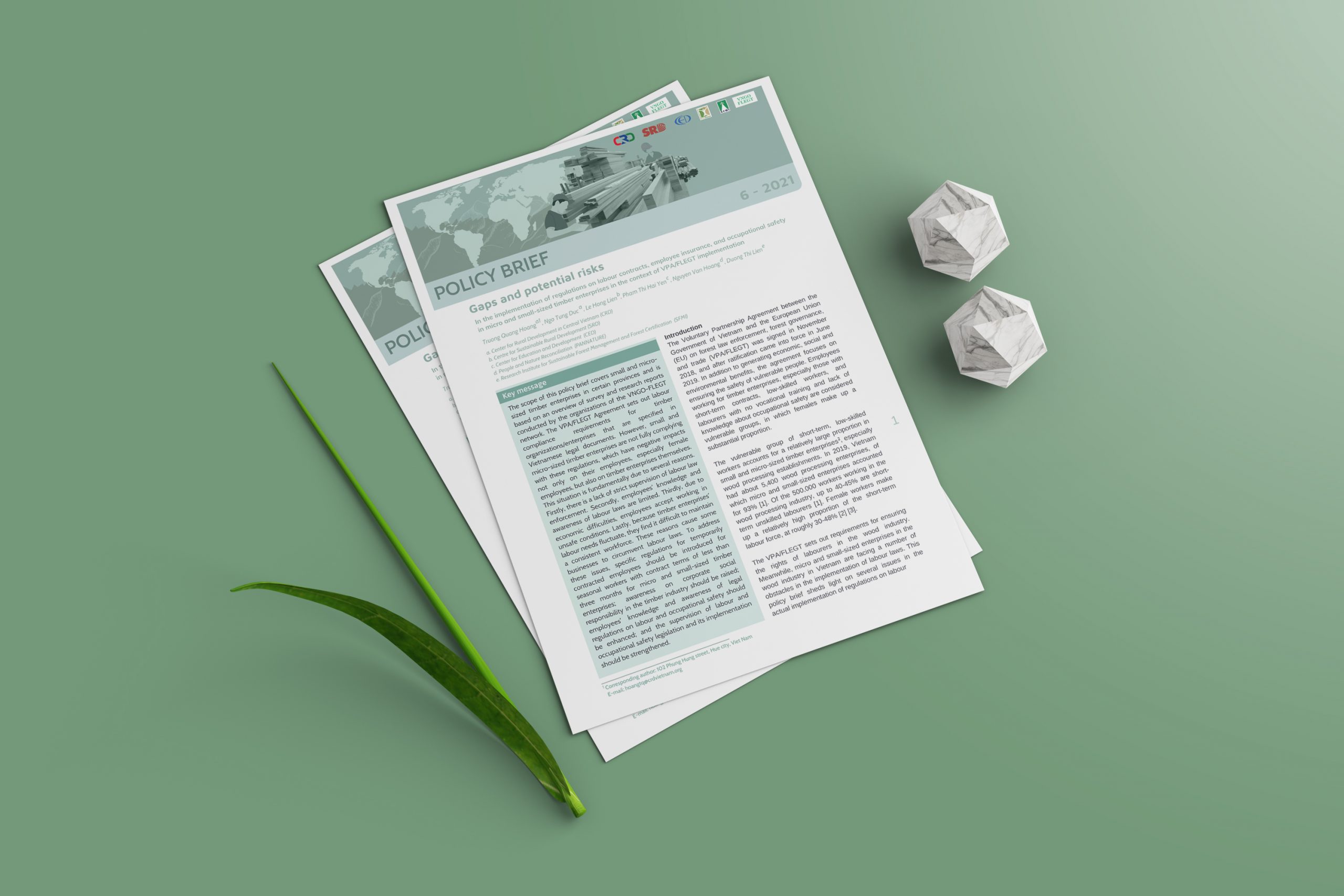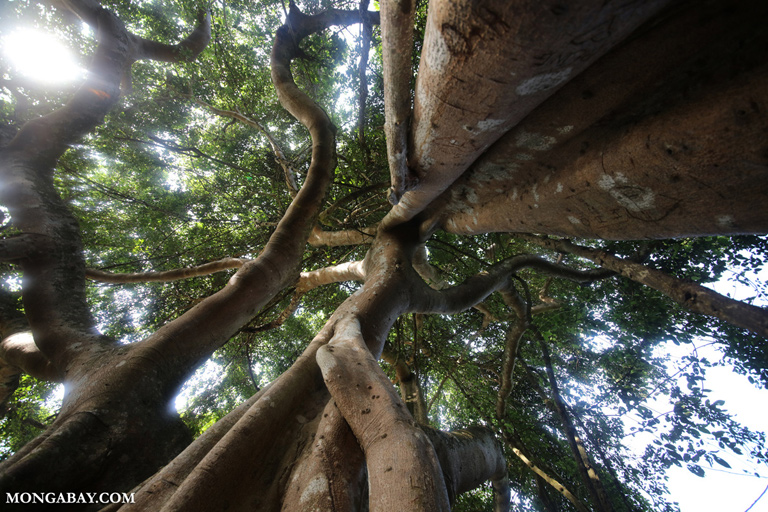Along with national programs on sustainable development and climate change response, small-scale projects with a bottom-up approach also play an essential role in implementing sustainable development goals. The paper analyzes the concepts of grassroots development and sustainable development based on a bottom-up climate change mitigation and adaptation project implemented in two Northwest provinces of Vietnam.
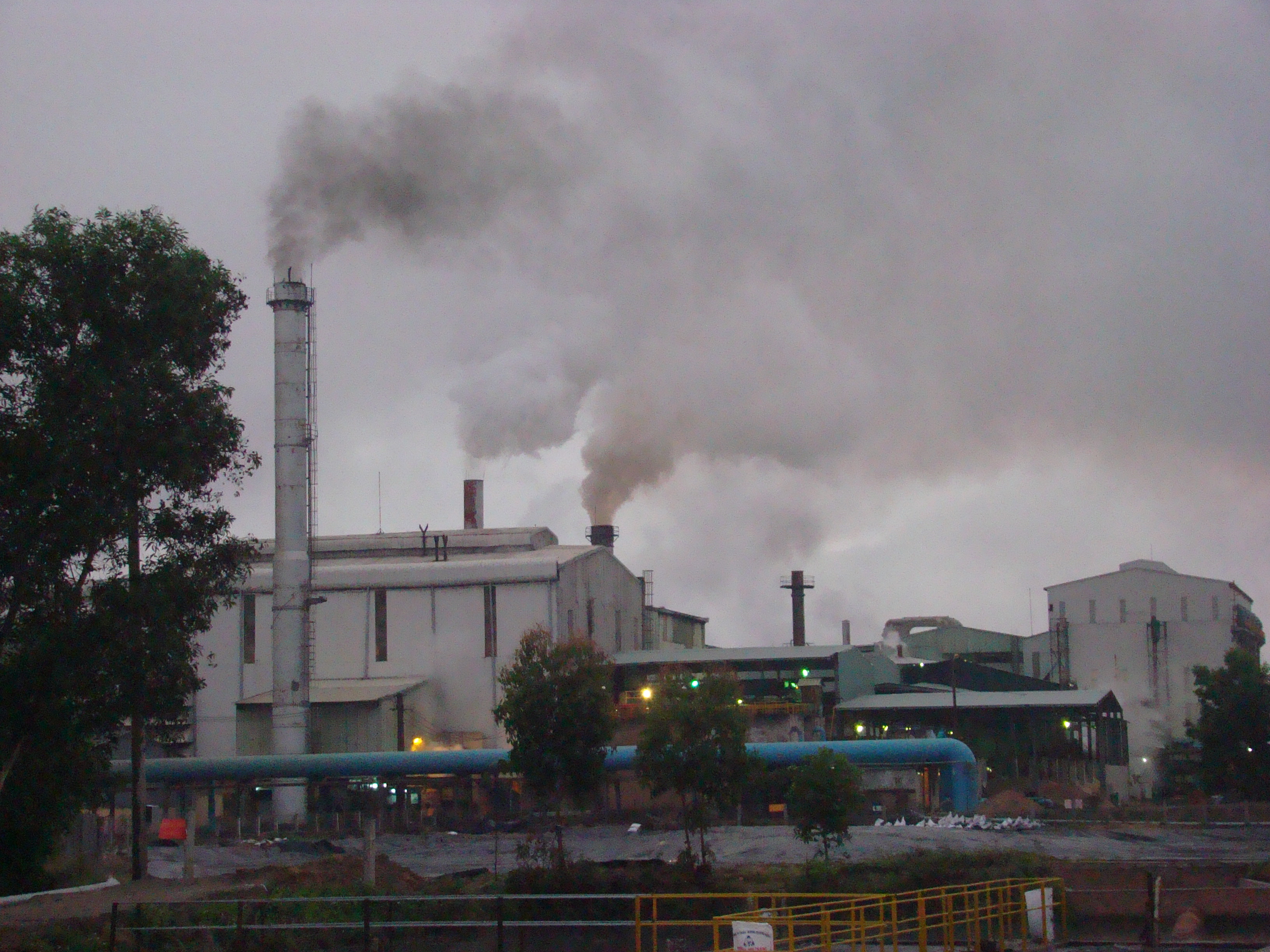
Revised Environment Law Needs to Innovate Mechanisms for Public Pollution Lawsuits
Vietnam’s environment has faced accelerating pressures of degradation and pollution from development. Pollution not only affects the health, property and lives of citizens and the state, but is also a potential source of political and social unrest, causing civil protests to stop the acts of pollution. Therefore, clear litigation for citizen lawsuits to protect their rights and interests will be an essential solution and beneficial for citizens, the state, enterprises, and other parties.
“Everyone has the right to live in a clean environment, and the obligation for environmental protection” (Article 43, Constitution 2013).
This was the first time the Vietnamese Constitution recognised a new environment-related human right. As a specialised law specifying the regulations of the Constitution, the draft amended LEP is expected to set up an institution for citizens to protect their human rights.
According to the draft LEP revision, political–social organisations and social–professional organisations in the environmental protection field shall have the right to petition state authorities to act against the owners of factories, businesses, and service facilities that cause acts of environmental violation, and request compensation. Simultaneously, the bill also emphasises that organisations, individuals, and communities have the right to petition and denounce state authorities in opposition to violations of environmental protection regulations that cause pollution and degradation, and environmental incidents that violate the rights and interests of the state, communities, organisations, households, and individuals. After receiving a petition and/or denunciation, authorities and the relevant person in charge will have to consider and resolve the complaint, pursuant to the regulations of petition and denunciation. Additionally, the prescription of limitations for initiating a lawsuit have also been amended in respect to benefits for plaintiffs, and is more appropriate to the reality of disputes and environmental damages in the bill.
For these reasons, compared to the LEP 2005, there are significant advantages for the protection of rights and interests of citizens and social–civil organisations in the role of petition and initiating lawsuits in the environmental field. However, there are still many unresolved gaps on the road to peoples’ access to environmental justice.

Who has the right to initiate a lawsuit?
Pursuant to the LEP revision, four entities will have the right to initiate a lawsuit based on violations of environmental protection regulations. They are (i) authorities; (ii) organisations; (iii) individuals; and (iv) communities. Nevertheless, these regulations could lead to confusion or misunderstanding.
Firstly, it is not clear which authorities/agencies have the competency to initiate a lawsuit against environmental violators.
Item 2, Article 56, of the Civil Procedure Code (2004) promulgates “Agencies and organisations prescribed by this Code, which institute civil cases to request courts
to protect the public’s interests and the state’s interests in the domains under their respective charges are also plaintiffs.” According to guidelines in Part I, section 2 of Resolution No. 02/2006 of the Judges’ Council of the Supreme People’s Court dated May 12th, 2006, “Agencies and organisations have the right to institute civil cases in order to request court protection for the public’s interests and the state’s interests as prescribed by section 3, Article 162 of the Civil Procedure Code, provided they fulfill the following conditions: (1) Agencies and organisations have the authority and responsibility to implement state management and social management in a specific field; and (2) The public’s interests and state’s interests must be in the domain of the agencies’ and organisations’ charges.”
Regarding the opinion of the Supreme People’s Court, “Natural Resources and Environment agencies have the right to initiate a civil lawsuit to request the courts to force individuals, agencies, and organisations that cause environmental pollution to pay com-pensation and remedy public environmental incidents.” However, this regulation does not specify which authorities are “Natural Resources and Environment agencies”, Department of Natural Resources and Environment (DoNRE), or Ministry of Natural Resources and Environment (MoNRE)? In addition, state authorities and responsibilities for environmental matters are not only under the management of Natural Resources and Environment agencies, but also under other Ministries and People’s Committees (PC) at all levels.
Some people say that civil society organisations (CSOs) or non-governmental organisations (NGOs), such as the Farmer’s Union, Marine Creature Conservation Association, Union of Science and Technology on Plant Protection, and Vietnam Association of Nature and Environmental Protection, should also have the right to initiate a lawsuit because they act for public interests and the state’s interests in their respective charges.
In reality, when dealing with very serious cases of environmental pollution such as Vedan’s sewage poisoning the Thi Vai river, or Nicotex Thanh Thai company burying pesticides underground and poisoning the land in Cam Thuy district, Thanh Hoa province, citizens usually choose the Farmer’s Union to be their authorized representative to institute a legal case. Although being a new regulation in the bill, social–professional organisations such as the Farmer’s Union shall not be able to initiate a lawsuit without authorisation while the authorities in charge of suing are still unspecified.
Secondly, who are the organisations, individuals and communities?
In the spirit of the draft LEP revision, organisations, individuals, and communitieshave the right to sue in order to protect not only their rights, but also public interests and the state’s interests, and even the interests of households and individuals. This means that organisations, individuals, and communities can be anyone, not just the victims. It seems to be an expansion of their rights, but actually, there is a lot of conflict with other regulations both in this bill and in relevant laws conducting this right.
Firstly, the aforementioned social–professional organisations are one kind of organisation, but they do not have the right to sue per se, they can only request the authorities to initiate a lawsuit.
Secondly, according to the right to institute civil cases as prescribed in the Civil Procedure Code , individuals can only institute a case to protect their own legitimate rights and interests while organisations can protect both their rights and interests, and public and state interests, as long as they belong under their management. However, guidelines at Part I, Section 2 of Resolution No. 02 dated May 12, 2006 of the Judges’ Council of the Supreme People’s Court show two compulsory conditions for organisations initiating a lawsuit that is not for protecting their own benefits: (i) That they hold duties and authority in the implementation of specific fields of state competence and/ or social management; and (ii) The public interests and state interests that need safeguarding by the courts belong to the charges of that agency or organisation. As already mentioned with competent agencies/authorities, it is ambiguous which organisations can institute a lawsuit to protect the common environment.
Thirdly, communities are not recognised by the law as an entity or as an involved party in civil cases. Additionally, the definition of communities in the draft LEP
includes political–social organisations, social–professional organisations, and communities, but does not specify who the communities are. Therefore regulations on a communities’ rights to participate in the evaluation of environmental protection results or request the supply of information from the owners of factories, usinesses and service bodies/units in other regulations, shall not be meaningful in reality, due to the fact that they lack proper definition of communities and a mechanism to verify the representative.
Based on the above reasons and arguments, it is clear that the persons/entities that have the right to file a lawsuit on environmental matters in the draft LEP revision have not changed significantly or received any major innovation in comparison to the LEP (2005). The victims will still be the organisations and individuals whose legitimate rights and interests were infringed upon.
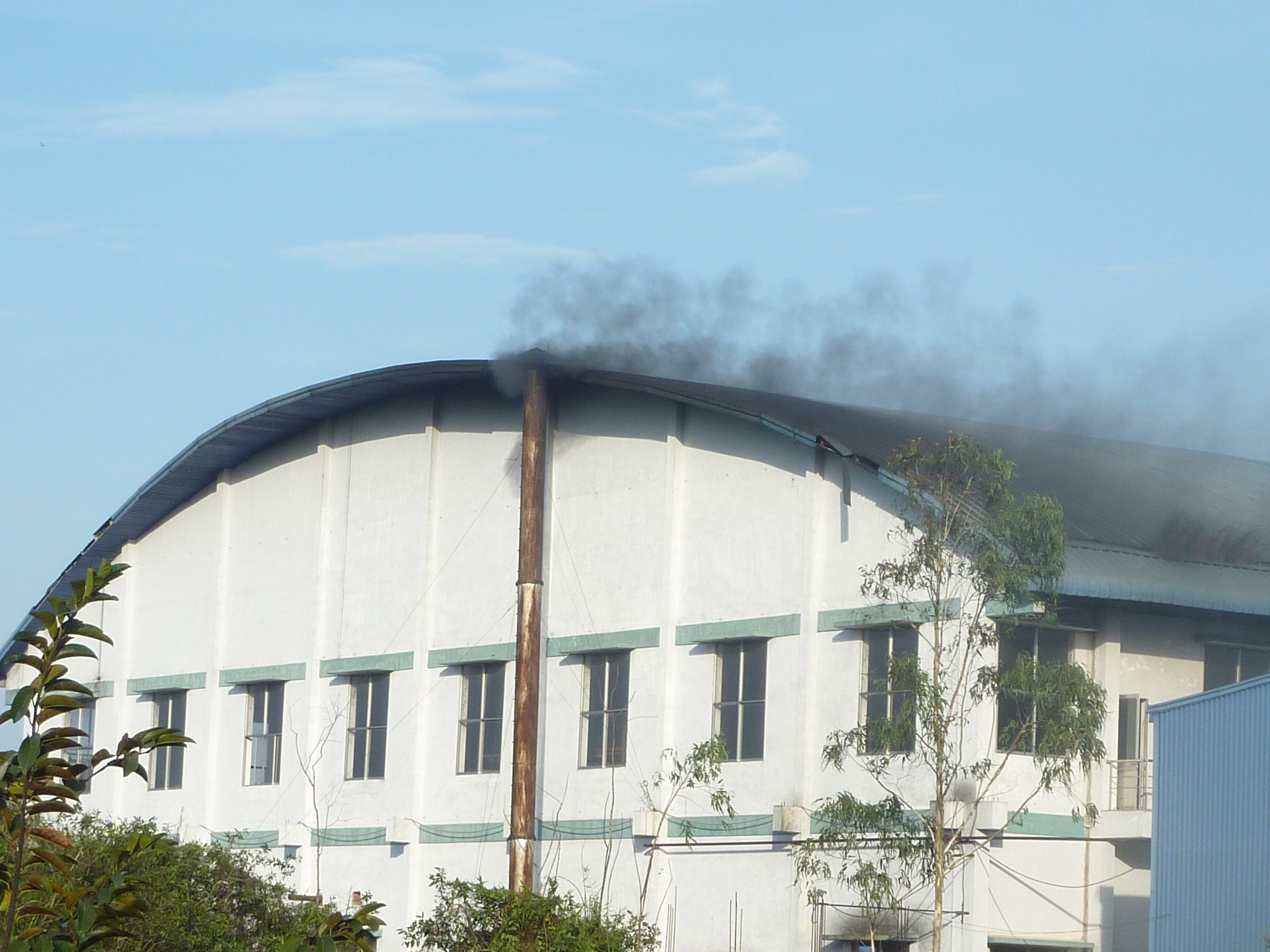
Who shall institute a lawsuit incourt?
The draft LEP revision clearly defined the parties to an environmental dispute as (i) organisations and individuals using environmental elements; (ii) organisations and individuals exploring and using environmental elements, versus organisations and individuals restoring and remediating polluted and degraded environments, and compensating the environment. The settlement shall proceed according to the settlement regulation of the dispute over compensation for non-contractual damage and other relevant legislation. In short, defendants in civil cases shall be organisations and individuals either exploring and using environmental elements, or acting for environmental protection.
Concerning this, state agencies or authorities are responsible for environmental protection outside environmental disputes, respective compensation liabilities and joint liabilities to these environmental disputes, despite the fact that environmental damages can be caused by state agencies. This differs from disputes over land acquisition for project developments, where people institute a lawsuit against the state’s administrative agencies when their decisions directly affect citizen’s rights and interests. Nonetheless, in the environmental field, authorities/agencies are often not directly the polluters or source of the disputes, but their acts can cause or contribute to environmental damage. For example, state agencies may approve a project development without the Environmental Impact Assessment (EIA) report in advance, and then the project’s operation is the cause of pollution. Another example would be promulgating a guideline for joint operation of reservoirs and lakes for hydropower plants. If Danang lacks fresh water later on, which then causes damages for 1.7 million people in the lower areas, Danang shall not institute the lawsuit, neither will MoNRE who does not use the water resource, or hydropower plants which are not committing illegal acts, they are just complying with MoNRE’s guideline.
On the other hand, the limitation of involved parties to a dispute excludes the authorities/agencies responsible for the management of environmental elements, even in conducting the remedy and restoration activities in areas of pollution and degradation and holding the right to institute a lawsuit pursuant to civil procedure, it shall not be consistent and appropriate to other regulations in the draft LEP revision and relevant laws.
One of the significant innovations of the draft LEP revision is the individual liabilities principle. This principle is as follows:
“a) Executive leaders shall be directly responsible for violations of environmental protection rules relevant to their organisation’s operation;
b) Leaders of environmental protection agencies and other agencies related to organisational and operational management causing environmental pollution and degradation shall be responsible for management liabilities according to provisions of the law;
c) Organisations and individuals causing environmental pollution and degradation shall be responsible for remediation and compensation for their acts;
d) In the case of individuals causing pollution while belonging to an organisation and performing assigned duties, the leader of that organisation shall be responsible for the payment of compensation.”
The draft LEP revision could be innovative by moving to personalise the responsibilities of leaders in organisations and agencies that violate environmental protection regulations. However, to avoid organisations becoming free of liability due to leaders taking personal liability (clause d), the draft should apply regulations of compensation for damage in a number of specific cases in the Civil Code on compensation for non-contractual damages for settlement. Therefore, if individuals, officials or civil servants cause environmental damages during the performance of their duties assigned by organisations and agencies, the compensation liabilities shall firstly belong to that organisation or agency, and then the person at fault for causing the damage shall reimburse an amount of money to the organisation or agency . This regulation not only complies with common law, but also ensures that compensation can be feasible, quick and prompt, especially in cases where personal property is insufficient to compensate the environmental damages.
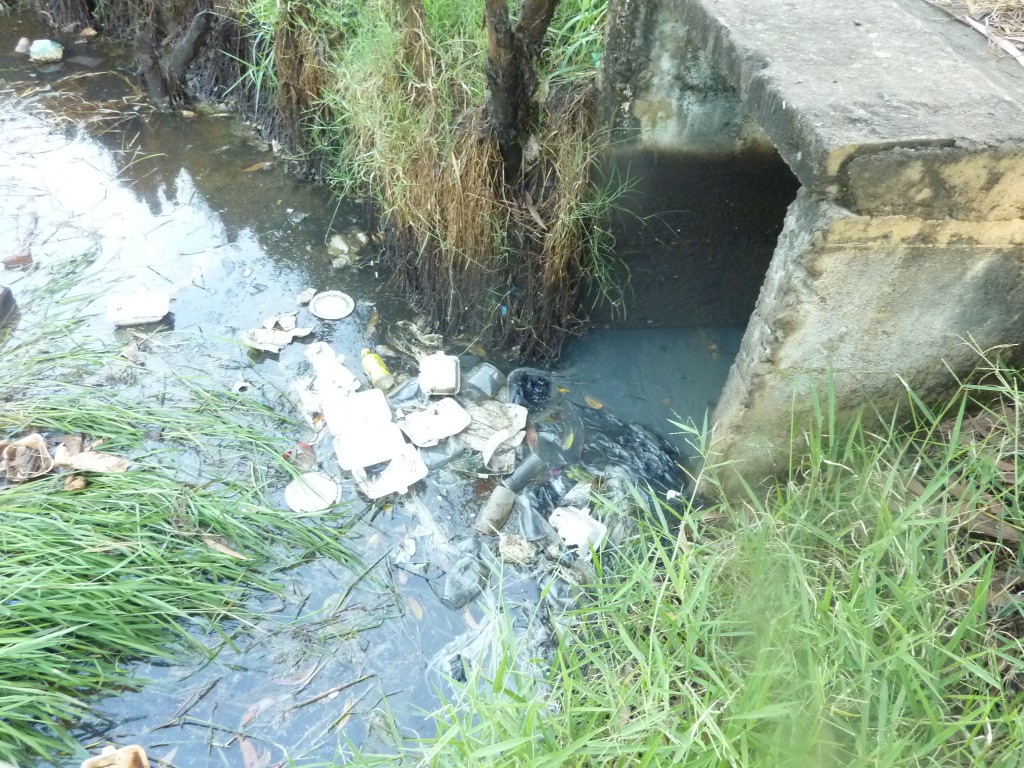
Mechanism for initiating a lawsuit?
In the draft LEP revision, the mechanism for initiating a citizen lawsuit complies with the common law on civil non-contractual settlement and other related laws. Therefore, in principle, liability for compensation only arises from fully following four conditions: (i) Damages occur; (ii) Illegal acts; (iii) Cause–effect relationship between damages and illegal acts; and (iv) Intentional or unintentional fault of the person who caused the damages.
However, even in the case of environmental pollution, legal liabilities still arise without any fault, but the burden of proof for the remaining three conditions is not easy for anyone who would like to initiate a citizen lawsuit. Damages of pollution and degradation comprise: (i) a reduction in the functions and utilities of the environment; and (ii) damages to health, human life, legitimate property and interests of organisations and individuals resulting from the
reduction in the functions and utilities of the environment.
Damage to human health and life, property and interests of multiple parties can be health, life and property of individuals, legitimate property and interests of organisations, or the natural environment. They cannot be separated into environmental damages for specific areas, with damages for health, property and legitimate interests of organisations or individuals in that area; and consequently, in many cases it is hard to define who the aggrieved party is. In some cases of environmental violations in Vietnam, we have to hire an overseas technical assessor before bringing these cases to trial. This is a barrier for citizens who would like to initiate a lawsuit. On the other hand, it is not clear who is responsible for the burden of proof and expenses of damage verifications and assessments amongst the parties. This means that in principle, major responsibilities belong to the aggrieved parties who would like to institute a lawsuit. Plaintiffs bear the responsibilities for proving the damages to health, human life, legitimate property and interests of organisations and individuals, resulting from a reduction in the functions and utilities of the environment. An exception is environmental incidents where pollution occurs in one or more provinces. In these cases, the burden of proof shall rest in the hands of People’s Committees for local issues and the MONRE for the rest.
Secondly, proving the illegal acts is a challenge in both theory and practice. Evidence of the cause supplied by people is not recognised as being legally valid, while an agencies’ verification must comply with processes and is often after an illegal act has been committed. As a result, the consequences are not sufficient to identify the acts as illegal when the agencies verify. Moreover, the environmental technical regulation system lacks many regulations, causing difficulties for defining violations For instance, results of control experiments on soil, water and waste samples of the Nicotex Thanh Thai Joint Stock Company, which buried a large quantity of toxic chemicals on their land, showed some samples in excess of the permitted standards in regulations, while others had no standards or regulations for comparison.
Thirdly, the cause–effect relationship between illegal acts and consequences is complicated, and in some cases cannot be determined. Such situations include (i) many illegal acts coming from multiple parties such as waste from factories in industrial zones; (ii) impacts related to natural disasters, disease, genetic sources, etc.; or (iii) illegal acts coming from aggrieved parties (e.g. residents causing pollution through litter, waste water, pesticides, etc.). Meanwhile, the law requires us to prove the cause–effect relationship, which means the acts causing damage must be directly or reasonably determinable to be responsible for such damages, in order to verify the defendants responsible for compensation. This is also a compulsory condition to initiate a lawsuit petition by law.
Currently the statute of limitations for lawsuits is two years from the date on which the legal rights or interests were infringed. In many cases, this is not enough time to verify the damages or prove the cause–effect relationship between damages and illegal acts. The draft LEP revision has come up with a significant innovation, with the statute of limitation for a lawsuit calculated from the date on which organisations and individuals realise their legal rights or interests have been infringed by illegal acts of other organisations and individuals. Therefore, the draft LEP revision has resolved this inadequacy.
However, if the draft keeps the current regulations of compensation for non-contractual damages under Civil Law for environmental pollution, the disadvantages lean towards plaintiffs because they are nearly completely responsible for the burden of proof, which is often beyond their capacity.
The settlement of disputes in several countries, particularly in China, over time has shown that switching the burden of proof is a significant revolution that supports aggrieved parties in realization of their rights. As a result, plaintiffs just have to prove the illegal acts of the defendants and the consequences of such acts, while the defendants must prove there is no cause–effect relationship between their acts and the damages.
In addition, environmental disputes such as Vedan involved nearly 7,000 aggrieved households, and Nicotex Thanh Thai or Sonadezi Long Thanh hurt hundreds of people. However, the draft LEP revision does not provide a mechanism for these communities or a group of people to initiate a lawsuit, preventing them from acting cohesively and using community resources and capacities to prove the damages on a large scale and in complicated cases of environmental pollution.
In other words, around 800 environmental inspectors at all levels and 2,000 environmental police are small numbers in comparison to the thousands of environmental protection law violations nationwide. However, increasing the number of officers in charge of environmental violations is impossible in the context of the state’s administration restructure. One solution that could enhance the control of activities affecting the environment both on paper and on location in a way that economies more human and financial resources than real inspections, is to introduce an environmental audit mechanism. Environmental audit mechanisms are applied in many countries around the world to monitor and control the actual operation of manufacturing, trade and service facilities affecting the environment and should be the next step of the EIA. For example, monitoring a company’s expenses relating to waste-water treatment activities and mitigation of environmental impacts and pollution could provide a fast and cheap initial indication of a company’s environmental performance via environmental audit reports. Additionally, as Vietnam’s institution already comprises the State Audit and a large number of organisations and individuals acting in the audit field, an increase in officers to supervise these environmental protection activities would not be necessary.
It is clear that the draft LEP revision has remarkably documented environmental protection articles and clauses, but to ensure their feasibility, effectiveness and unity, the draft needs further changes to protect the rights and interests of citizens, who are at the greatest disadvantage from environmental pollution. It is also a practical way to realise the state’s commitment in the 2013 Constitution on human rights.
Nguyen Hoang Phuong – People and Nature Reconciliation (PanNature)
The article was on “Legalizing a Greener Future” and published by Vietnam Investment Review (VIR) and United Nations Development Programme (UNDP) in 2014.

